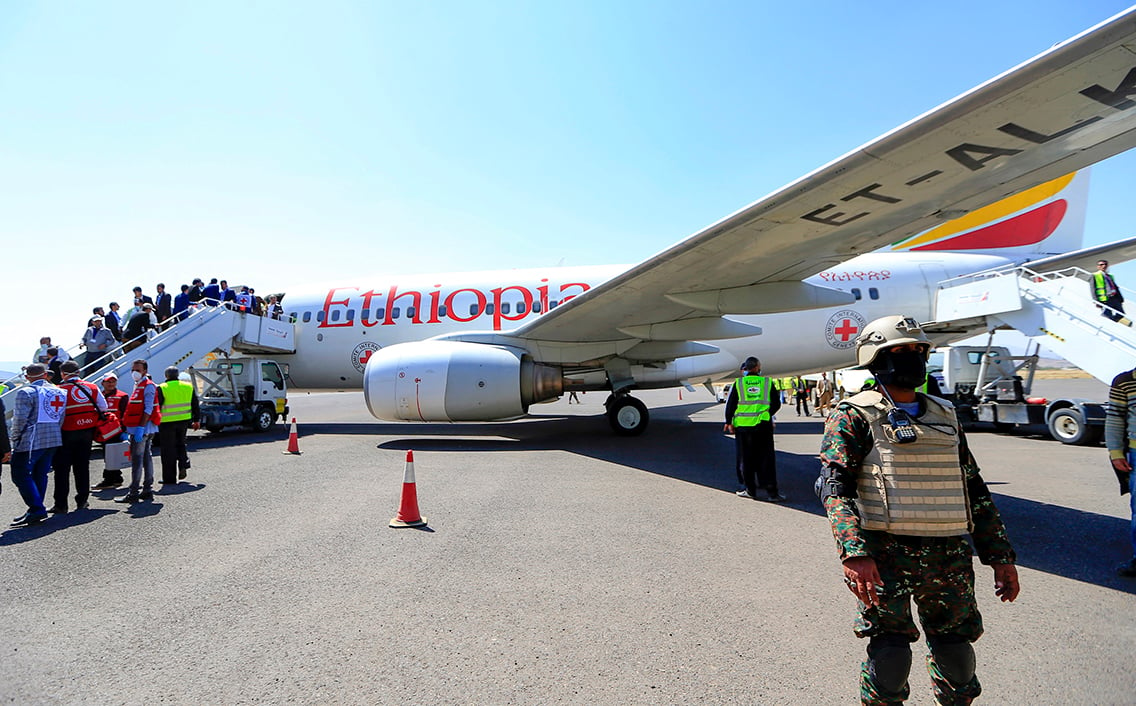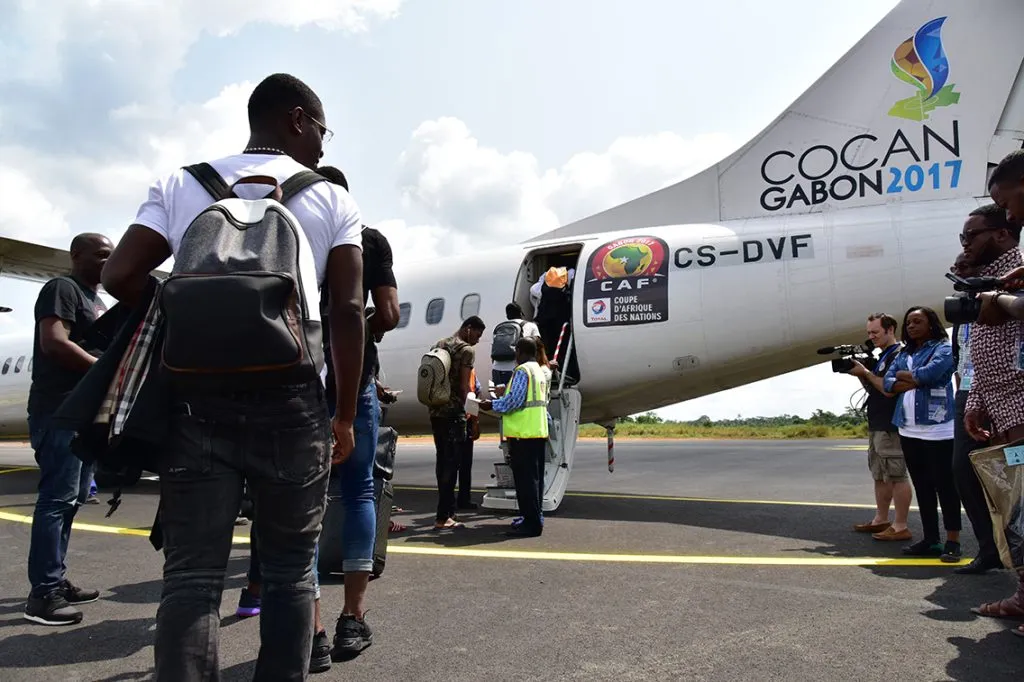
The extent of the challenge facing African airlines can be grasped simply by finding a flight tracking website, and zooming-out to see a global view of aircraft movements in real-time. Much of Europe, North America and some parts of Asia are obscured by dense clouds of slowly-moving aircraft icons. But the map of Africa is punctuated by just a few lonely planes making their way across the continent.
Africa’s share of the global air travel market stands at only around 2% – a level that has remained largely static over the past 20 years. While the potential of Africa as the “last frontier” of global aviation has often generated excitement in airline boardrooms, many African carriers have struggled with financial chaos, political interference and haphazard management over the course of many decades.
Recently, however, there have been unmistakable clues that things may be looking up for some of Africa’s leading airlines.
Ethiopian Airlines, by far the largest carrier on the continent, has gone from strength to strength in recent years. Its CEO, Mesfin Bekele, said in May that the carrier is on course to achieve a 30% rise in passenger numbers and a 20% increase in revenues in the year ending 30 June. And Ethiopian shows few signs of slowing down, with a plan to double its fleet size and route network by 2035.
Meanwhile, one of Ethiopian’s traditional rivals, Kenya Airways, appears finally to be emerging from a lengthy period of financial difficulties. It recorded an operating profit for the first time in seven years in 2023 – although it remains loss-making once taxes and debt service payments are deducted.
And South African Airways – which collapsed during the Covid-19 pandemic, having experienced years of mismanagement – has been partially revived with some success. While it is unlikely to resurrect its once-extensive route network anytime soon, SAA has been able to revive several inter-continental connections – including a route between Johannesburg and Perth in Western Australia that launched in April.
After the pandemic
The global aviation sector took a severe battering as Covid shut down most international travel – but African carriers now appear to be bouncing back strongly. The International Air Transport Association (IATA) forecasts that the compound annual growth rate of traffic in the region (measured as revenue passenger kilometres) will be 4.7% from this year until the end of the decade.
“Some performance indices suggest that the aviation market in Africa is beginning to show momentum,” says Chidozie Uzoezie, aviation analyst and founder of the African Aviation Group, a consultancy. He points to stronger financial results and “less gloomy forecasts”, along with better safety records, as key factors that are boosting the sector. “As a result of this positive outlook, aircraft manufacturers, lessors and suppliers are beginning to take the African market more seriously.”
As well as SAA reviving some of its inter-continental services, several major airlines are opening new routes or offering more frequent flights to major international hubs. Kenya Airways announced in March that it is offering extra flights to New York and Paris, as well as Accra, Freetown and Lagos. Kenya Airways executives have also hinted at plans for a direct route to Beijing, starting next year.
Nigerian carrier Air Peace, meanwhile, launched a new direct service between Lagos and London in March. The development attracted considerable excitement as one of the first new intercontinental routes operated by a Nigerian airline in decades.
Data from aviation market intelligence company IBA shows a 105% year-on-year increase in seat capacity between Africa and Latin America in the second quarter of 2024, with capacity between the continent and the Asia-Pacific region rising by 38%.
“Looking at the traffic numbers there is certainly strong demand growth and this is translating into strong revenue growth,” says Dan Taylor, head of consulting at IBA. “The issue continues to be with profitability.” Indeed, despite an apparently healthy rise in passenger numbers, a worrying number of African airlines are still loss-making. The continent’s overall net profit margin was negative 3% in 2023, compared to a global total of +6%.
Ethiopian rules the skies
The reality is that very few African airlines have been consistently profitable over a sustained period.
The continent’s standout performer is Ethiopian Airlines. The carrier took a pronounced lead more recently as key rivals floundered.
Uzoezie notes that the airline has been able to achieve a “corporate identity built on professionalism and competence”. Indeed, while Ethiopian Airlines is wholly owned by the government, which shelved a plan to partially privatise the company during Covid, it has been largely allowed to operate without political interference.
“This is probably the most important recipe for Ethiopian Airlines’ phenomenal success,” says Uzoezie. “Realistically, I don’t see any other African airline catching up with Ethiopian anytime soon.”
Ethiopian has 90 aircraft on order, according to IBA – more than three times as many as any other African airline. This leaves Ethiopian poised to capture an even larger share of the market, Taylor notes. EgyptAir, Libya’s Afriqiyah Airways and Air Mauritius have also ordered A350 aircraft from Airbus, which are suitable for competing on longer inter-continental routes.
One of the other key reasons for Ethiopian continuing to enjoy a rosy outlook comes down to its ability to press home its geographical advantages. “There is no doubt that in any aviation market, geography plays a vital role,” says John Grant, chief analyst at aviation data provider OAG.
He says that, theoretically, Africa should boast several large regional airline hubs in the north, east, west and south of the continent. These hubs have not fully materialised, except in Addis Ababa, where Ethiopian has invested carefully and avoided overly-rapid expansion. Although Nairobi would, on paper, appear very well-placed to compete with Addis Ababa as an East African hub, Grant notes that Kenya Airways “blew their brains out” with a “ridiculously silly plan” to compete as far afield as South America and Australia in the 2010s.
Kenya Airways is now only around one-fifth of Ethiopian’s size, having been almost equal at the turn of the century. Despite the possible beginnings of a financial recovery, the Kenyan carrier has a very long way to go before it can even be considered a serious rival of Ethiopian once more.
Grant believes that Ethiopian can achieve further growth by operating more frequent services on existing routes. He notes that while most flights from Addis currently depart in morning and evening waves, there is capacity to add further departures during the day.
In the longer term, a new airport is planned for the Ethiopian capital. This would be able to handle 100m passengers per year – around quadruple the maximum capacity of the existing Bole International Airport. The timeframe for completing the project is unclear, but its purpose is obvious – to enable Addis Ababa to rival the hubs of the Gulf region in connecting the markets of Africa, Europe and Asia.
Grant sees few other African airlines that have the potential to match Ethiopian’s success. He credits Royal Air Maroc with creating a hub in Casablanca that connects top destinations in West Africa with all major European cities. “That works really well. It’s very successful for them, and they can continue to grow it when they’ve got new aircraft orders.”
However, he is more sceptical about RwandAir’s efforts to continue its expansion. “The problem for RwandAir is the further south you go in Africa, the harder it is to create a hub, because all of those points that are above your destination can be served by other airlines in a more logical flow.” As a result, Grant believes that RwandAir has now “plateaued”. He is sceptical that Qatar Airways’ reported plan to take a 49% stake in the company will prove to be a game changer, given Kigali’s limitations as a regional hub.
Geography is even trickier for Johannesburg and South African Airways. Richard Maslen, head of analysis at CAPA – the Centre for Aviation, an industry intelligence source – warns that Johannesburg is “only ever going to be a regional connector”.
SAA was on the brink of collapse even before the pandemic, having been loss-making for several years and “racked by corruption and fraud”, according to an official enquiry. Despite generating a degree of optimism since its relaunch in September 2021, and reportedly even making a profit in 2023, Maslen says that the “best days are unfortunately gone now” for the airline.
In March, the South African government scrapped a deal to sell a 51% equity stake in the airline, ahead of an eventual IPO. Public enterprises minister Pravin Gordhan told reporters the government and the proposed buyer, the Takatso consortium, had agreed “there was no clear path forward” for the transaction after a new business and asset valuation.
Gordhan argued that the airline had increased in value since talks opened in 2021 during the pandemic, warranting a higher purchase price for the stake, but Takatso were unwilling to pay significantly more.

Headwinds
SAA is just one of many African airlines that have faced inherent difficulties linked to macroeconomic and geopolitical factors. But the cost of assets also weighs heavily on many of the continent’s airlines.
“The cost of finance for asset acquisition is higher in Africa than in other jurisdictions, as airlines in the continent do not have access to the same financial channels as carriers from other parts of the world,” says Andreas Pericleous, a VP for business development at aviation services company ACC Aviation. He warns that investors “appear reluctant to work with airlines from certain parts of the continent”, partly because many countries have failed to implement the Cape Town Treaty, an international instrument that governs transactions in moveable property.
Given the challenges in financing, combined with a large backlog in deliveries of new aircraft, Pericleous advises smaller airlines to focus on acquiring second-hand jets to expand their fleet, suggesting that “the lower overhead financing cost could pave the way for financially sustainable growth”.
But some obstacles are even more difficult to fully overcome. Chief among these are the currency fluctuations that remain a feature of many African economies. Airlines generate most of their income from national currencies, but largely pay for fuel, spare parts, aircraft leasing, airport fees and navigational charges in US dollars. This leaves them highly exposed to the effects of currency movements.
Uzoezie says that currency fluctuations and difficulties in accessing foreign exchange are headaches for airlines globally. But, he says, “African airlines are affected the most due to the prevailing macroeconomic factors, especially exorbitant interest rates, inflation and unfavourable fiscal policies.”
Nigeria provides particularly stark examples of how currency depreciation, and associated problems with foreign exchange availability, can severely affect the airline market. Emirates announced the suspension of services to the country in August 2022 due to restrictions on its ability to repatriate funds. Flights between Lagos and Dubai are now due to resume in October, after President Bola Tinubu made resolving the dispute a priority upon taking office last year.
Open skies?
Some might dismiss the struggles of African airlines as a problem that concerns only Africa’s wealthy elite and foreign business travellers. Others might even welcome the relative lack of air travel in Africa, given the carbon emissions that result from flying.
But there is little doubt that air travel can help advance Africa’s overall economic prospects. Better connections offer huge opportunities to boost trade and investment within Africa, as well as between the continent and the rest of the world.
In turn, the takeoff of aviation in Africa depends to a large extent on breaking down barriers to trade within the continent and promoting regional integration.
However, many African governments have historically been reluctant to remove the barriers that have impeded airlines from operating freely between countries, fearing that liberalisation could negatively impact their national flag carriers. Indeed, while almost everyone recognises the benefits of consolidation in the airline sector, so that carriers can achieve greater economies of scale, finding agreements to allow this to happen have so far proven elusive.
The Single African Air Transport Market (SAATM), an African Union project that can trace its origins as far back as 1988, aims to harmonise regulations and remove most market access restrictions. So far, 34 African countries have signed up, although the timeline for fully implementing SAATM remains unclear.
“A single, unified African air transport market, entirely deregulated, which will provide market access and traffic rights to all eligible airlines, will promote connectivity and efficiency,” says Pericleous. He adds that SAATM could contribute to thousands of jobs being created as trade and tourism accelerates.
However, Pericleous warns, “for as long as most African countries continue to deny visa-free travel for African nationals of many countries, the market potential will never be fully exploited.”
The distance to SAATM becoming a reality is illustrated by ongoing diplomatic spats that lead to air travel within Africa being restricted on a fairly regular basis. Tanzania briefly blocked Kenya Airways from operating flights to Dar es Salaam in January, after Kenya had refused Air Tanzania permission to operate cargo flights between the two countries.
“Everybody knows it’s the right thing to do for Africa to open the market to air travel,” says Maslen, though he laments that governments have only paid “lip service” to the need to liberalise. Allowing airlines to consolidate into regional players “makes a lot of sense”, he insists – and Africa even has successful models from the past that it can draw on. Air Afrique, a transnational carrier for francophone West and Central African that operated from 1961 until 2002, proved that a regional airline can operate successfully on the continent, Maslen argues.
An “encouraging” sign, he says, is that Ethiopian Airlines has increasingly been allowed to form joint ventures or acquire equity stakes in other African airlines. Ethiopian is a major shareholder in carriers including Zambia Airways, Malawi Airlines and Togo’s ASKY Airlines. It also took a 49% stake in the proposed Nigeria Air, although the project to create a new national carrier for Nigeria is currently suspended.
Ultimately, Maslen believes that measures to reduce taxes on air travel, alongside efforts to liberalise the market, will be needed to allow the continent’s airlines to achieve their potential. “The cost of flying in Africa is ridiculous,” he says, “because of airport costs, because of taxation, because of the cost of fuel, because of the agreements that artificially increase the price of flying in Africa.”
Only when these barriers are addressed will lower-cost “no frills” airlines finally be able to gain traction in Africa and extend the benefits of air travel to a far wider market.






Recent Comments